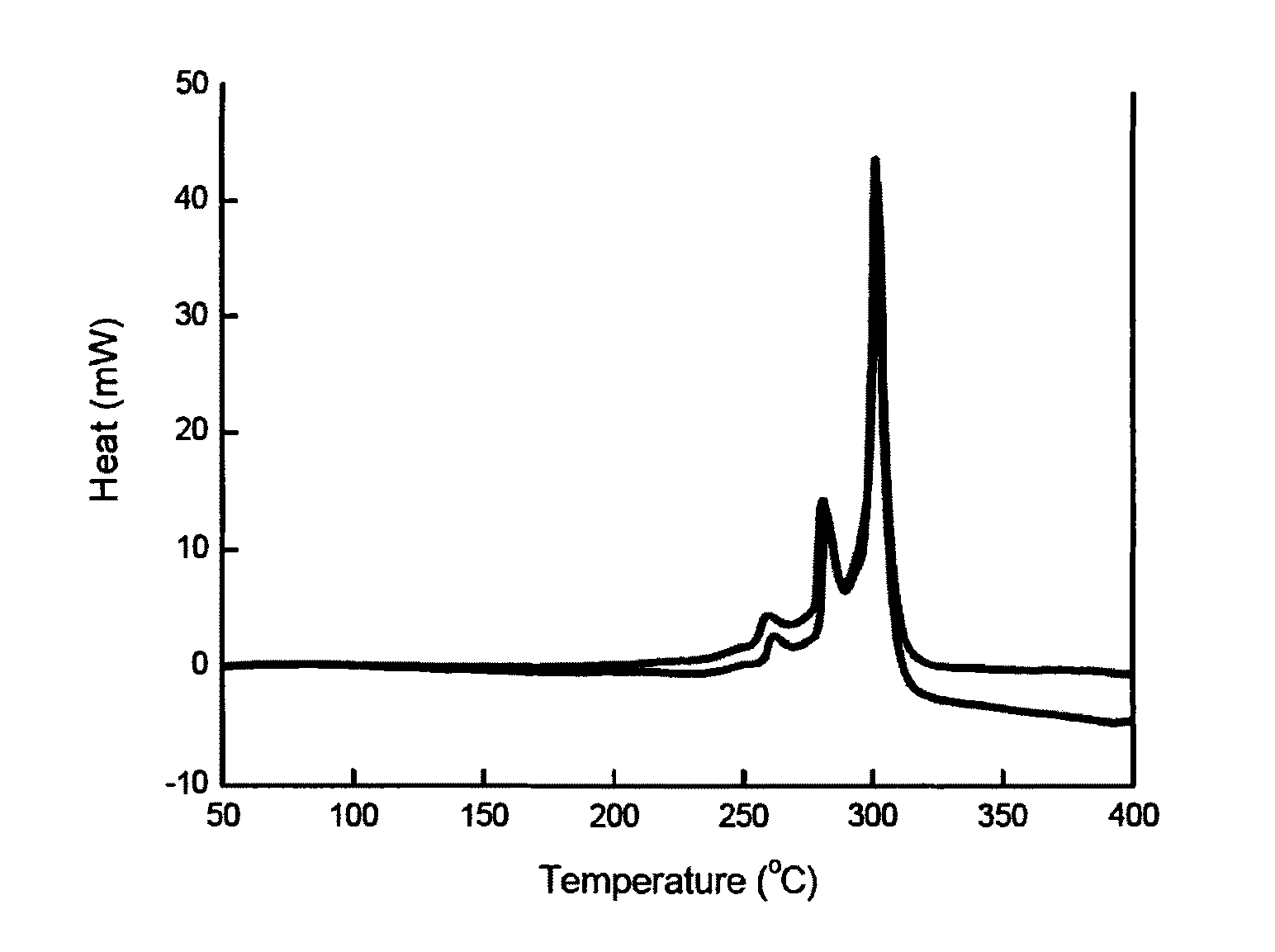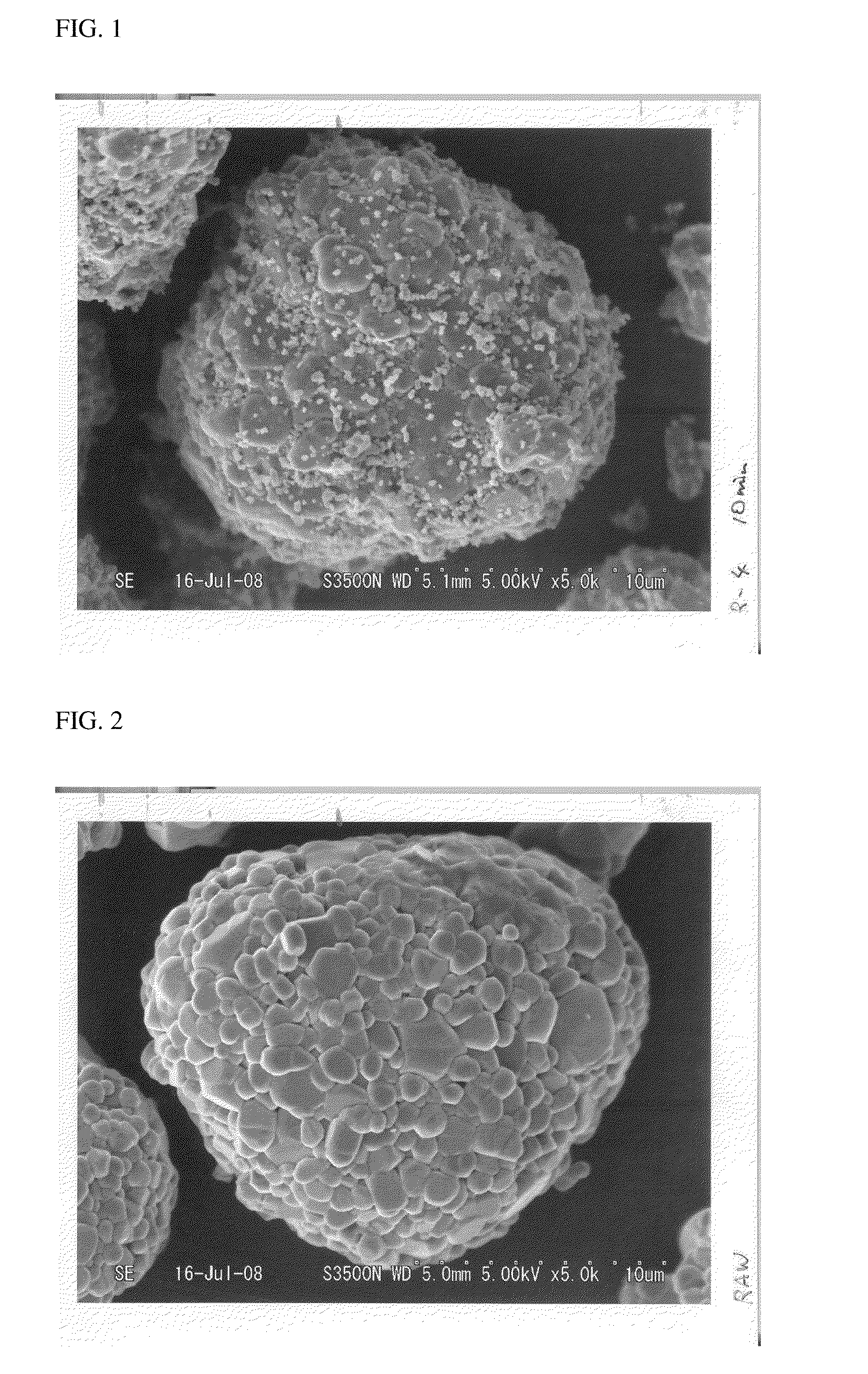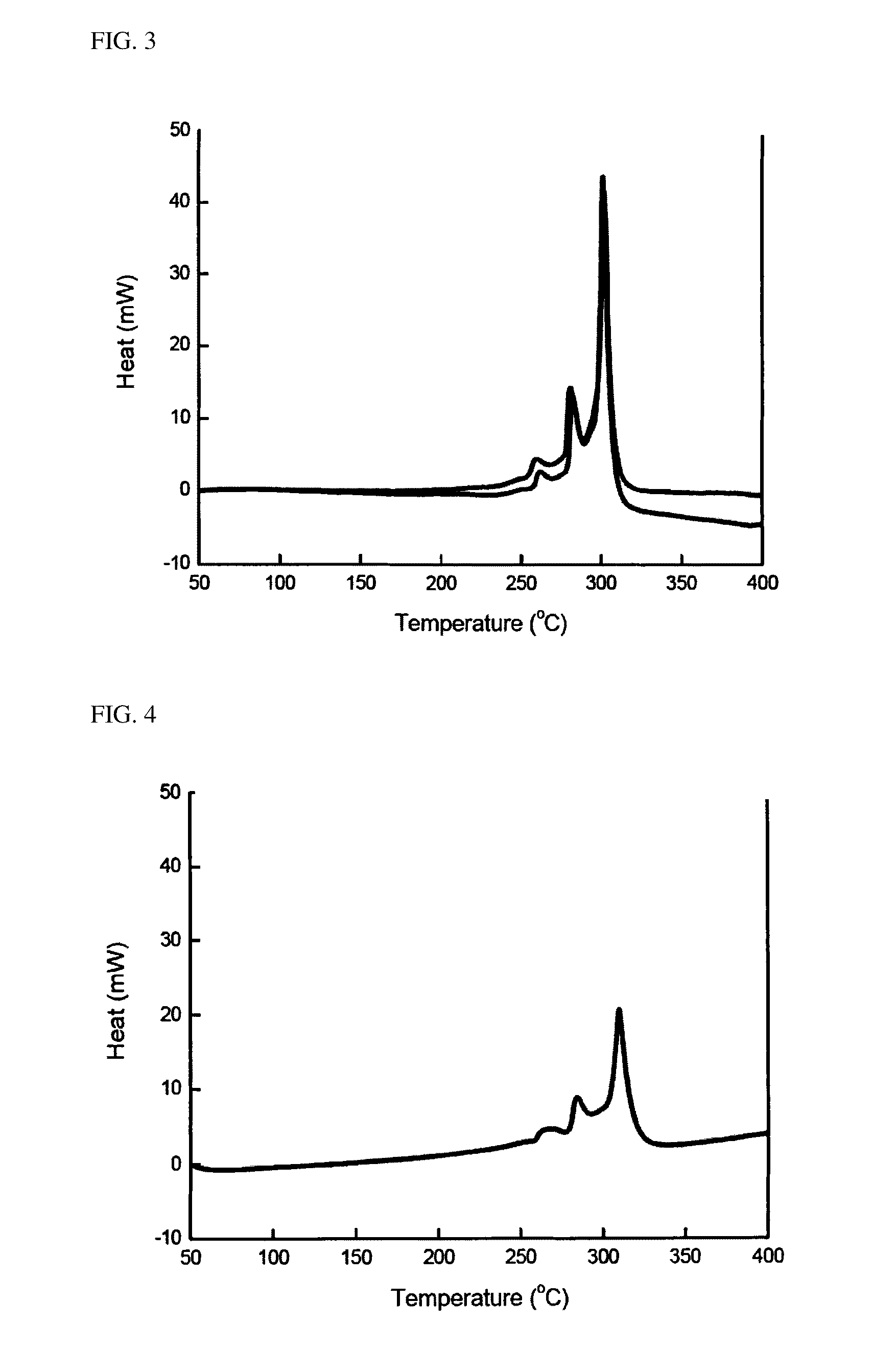Among such cathode active materials, although LiCoO2 with excellent physical properties such as cycle properties is widely used, this material encounters disadvantages including, for example, low safety, high cost due to scarcity of cobalt as a
natural resource, limitation in large-scale use as a power source in
electric vehicle applications, and the like.
First, LiNiO2 oxide exhibits rapid
phase transition in a
crystal structure due to change of volume involved in a charge-
discharge cycle, in turn causing particle fracture and generating pores in a
grain boundary. Therefore, absorption and
discharge of lithium ions are prevented and polarization resistance is increased, thus deteriorating charge-discharge performance. In order to solve these problems, according to a conventional process, Li source is excessively used and reacts in an
oxygen atmosphere to produce LiNiO2 oxide. The produced cathode active material has drawbacks in that a structure is expanded and unstable due to atomic repulsion of
oxygen atoms during charge of a battery and cycle properties are seriously deteriorated by repeated charge-discharge.
Second, LiNiO2 encounters a problem of
excessive gas generation during storage or charge-discharge cycle. This is because heat treatment is performed while excessively adding Li source to form an excellent
crystal structure during production of LiNiO2, and therefore, a water-soluble base such as Li2CO3, LiOH, etc. as a reaction residue remains between primary particles and is decomposed or reacts with an
electrolyte, in turn generating CO2 gas during charge. Furthermore, since a LiNiO2 particle substantially has a secondary particle structure formed by aggregation of primary particles, an area in contact with the
electrolyte is increased and the foregoing problem becomes more serious, thus causing swelling of the battery and decreasing high temperature stability.
Third, when LiNiO2 is exposed to air and / or
moisture, chemical-resistance is drastically decreased at a surface of the oxide and, due to high pH, an NMP-PVDF
slurry begins to be polymerized, in turn causing gellation thereof. The foregoing characteristics may cause serious
processing problems in the manufacture of batteries.
Fourth, high quality LiNiO2 cannot be prepared by simple
solid-
phase reaction, unlike the LiCoO2 production method. Any LiNiMO2 cathode active material comprising Co as a necessary
dopant, and other dopants such as Mn, Al, etc. is substantially produced by reacting a lithium material such as LiOH.H2O with a composite
transition metal hydroxide under an
oxygen atmosphere or a synthetic gas
atmosphere (that is, a CO2-free atmosphere), thus requiring high production costs. If any additional process such as washing or
coating is conducted in order to remove impurities during production of LiNiO2, production costs are duly increased. Accordingly, conventional technologies have focused in general on improvement of the LiNiO2 production process as well as characteristics of LiNiO2 cathode active material.
However, in the case of using the oxide for a long time, cycle properties are drastically deteriorated and other problems such as swelling caused by gas generation in a battery, reduced
chemical stability, and so forth, were not sufficiently overcome.
; impurities generated by residues remained after production of
nickel based lithium
transition metal oxide may decrease
cell capacity; or the impurities are decomposed inside the battery to generate gas, in turn causing swelling of the battery.
 Login to View More
Login to View More  Login to View More
Login to View More 


